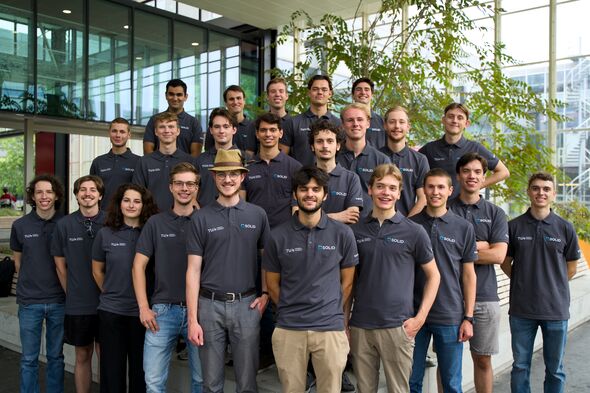SOLID travels to Egypt for Climatech Challenge final
This weekend, four members of Team SOLID will head to Cairo, where the Egypt Energy Show kicks off on February 17. There, they will present their innovative process for iron-based hydrogen storage. As a finalist in the Climatech Challenge, which is part of the trade show, the student team has a chance to win $35,000.
Mick Gast is already feeling a “healthy dose” of tension. As SOLID’s team manager, he will be the one to deliver the presentation to the Climatech Challenge jury on Monday. The competition is part of the Egypt Energy Show, “a trade show with 47,000 participants and over 500 exhibiting companies,” explains Gast, who, after obtaining his bachelor’s degree in Applied Physics, is dedicating his gap year to managing Team SOLID.
The Climatech Challenge, which awards a grand prize of $35,000, has five finalists, with SOLID being the only student team. “The other four are start-ups with a commercial focus,” says Gast. “Some already have years’ worth of business experience. But as students, we can benefit from the scientific expertise available within TU/e. Plus, we have a lot of FTEs at our disposal: Team SOLID has 35 members. In terms of technology, we are by no means inferior to the other contenders.”
Exhibition
A total of four team members are flying to Egypt, as SOLID will also be present at the exhibition during the three-day Energy Show. University fund UFe is covering part of the travel costs. “We hope to discover how much market interest there is in our innovation,” says Gast. “Are investors enthusiastic?”
“As a student team, we form a link between science and industry,” Gast explains. SOLID already has experience with this. Back in 2016, when the team was founded as part of an honors project by Professor Philip de Goey, the goal was to generate sustainable energy through iron powder combustion. They succeeded in adapting that technology for industrial use: former SOLID members are now involved with TU/e spin-off RIFT, which has found investors and is bringing the innovation to the market.
Steam
And so, SOLID was free to develop a new technology: iron-based hydrogen storage. This process also involves iron, but instead of burning it, it is “steamed”. The student team explains how this works in a video. When you expose iron to high-temperature steam, it releases not only heat but also hydrogen.
Gast: “The released hydrogen can be used, for example, for the production of glass, cement or metal. Those industries work with extremely high temperatures, and hydrogen is an effective and sustainable alternative to natural gas for reaching those temperatures.”
Rust
Not only does the “steaming” process produce hydrogen, it also turns the iron into iron oxide, or rust. With hydrogen, that rust can be converted back into iron, and voilà, you have a circular process. So, energy can be stored in iron (in the form of hydrogen), and that iron can be converted back into hydrogen at any time. That is great news for industry, says Gast.
“Iron is much safer and easier to store than hydrogen. I will demonstrate this during my presentation at the Egypt Energy Show by showing a jar of pellets – the iron spheres we use in our process. I can simply take that with me on the plane, something you definitely shouldn’t try with hydrogen!”



Discussion